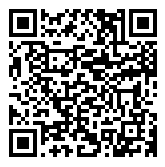Introduction of S-type pressure sensor
Release time:
Dec 26,2019
Pull pressure sensor characteristics: (1) Linearity: refers to the degree to which the actual relationship curve between the sensor output and the input deviates from the fitted straight line. It is defined as the ratio of the maximum deviation between the actual characteristic curve and the fitted straight line to the full-scale output value in the full-scale range. (2) Sensitivity: Sens
Pull pressure sensor characteristics:
(1) Linearity: refers to the degree to which the actual relationship curve between the sensor output and the input deviates from the fitted straight line. It is defined as the ratio of the maximum deviation between the actual characteristic curve and the fitted straight line to the full-scale output value in the full-scale range.
(2) Sensitivity: Sensitivity is an important indicator of the static characteristics of the sensor. It is defined as the ratio of the increase in output to the corresponding increase in input that caused the increase. Let S be the sensitivity.
(3) Hysteresis: The phenomenon that the input and output characteristic curves do not coincide during the change of the input quantity from small to large (positive stroke) and large to small (reverse stroke) becomes hysteresis. For input signals of the same size, the positive and negative stroke output signals of the sensors are not equal in size. This difference is called the hysteresis difference.
(4) Repeatability: Repeatability refers to the degree of inconsistency between the obtained characteristic curves when the input volume changes continuously in the same direction for multiple times in the same range.
(5) Drift: The drift of the sensor means that the output of the sensor changes with time when the input amount is unchanged. This phenomenon is called drift. There are two reasons for the drift: one is the sensor's own structural parameters; the other is the surrounding environment (such as temperature and humidity).
Common types of tension and pressure sensors:
1. S-type tension pressure sensor;
2. Z-pillar tension pressure sensor;
3. L-type high-precision tension and pressure sensor;
4, U-shaped pressure sensor;
5. ZT column tension pressure sensor;
6. ZX pin type tension pressure sensor;
7, B-type pull plate pressure sensor;
8. D-type pressure sensor;
9. X-type cantilever tension pressure sensor;
10. XS pin-type pull pressure sensor;
11, XD-type pin-type tension and pressure sensors.
Application of tension pressure sensor:
1. S-type pressure sensor is suitable for specified standard weighing, such as platform scale, hopper weighing system, etc., especially suitable for some industrial weighing systems that require high accuracy. Due to its high reliability and sealed design, it can work continuously and stably for a long time even in harsh environments.
2.The column type tension sensor has the advantages of both column type and S type. Its structure is compact, the shape is beautiful, the measurement accuracy is high, and the anti-biasing ability is strong. .
3. The L-type tension pressure sensor has high precision, low drift, small volume, and strong anti-biasing ability, and is widely used in the measurement and control system of small force values.
4. The U-type tension pressure sensor has a compact structure, convenient installation, high measurement accuracy, and strong anti-biasing ability. It is widely used in railway signal control, batching, and mechanical measurement and control systems for tension and pressure.
5. The structure of ZT small column tension sensor has the advantages of column and S type, compact structure, beautiful shape, high measurement accuracy and strong anti-biasing ability. It is widely used in batching, machinery manufacturing, tensile testing machines, etc. In the control system.
6, ZX type pin sensor is a high-precision tension and pressure sensor. Suitable for all kinds of traffic, hoisting mechanism, railway signal control, etc. Widely used in measurement control.
7. The B-type tension sensor has a pull-plate structure that takes into account the advantages of the column and S-type, and has high measurement accuracy. It is widely used in tensile testing, measurement and control systems for batching, machinery manufacturing, cranes, steel cables, and ropes.
8. The compact D-type tension sensor has a compact structure, convenient installation, high measurement accuracy, and strong anti-biasing ability. It is widely used in metering and control systems such as batching, machinery manufacturing, and tensile testing machines.
9. X-type cantilever measuring tension pressure sensor has low profile, excellent natural linearity, good lateral force resistance, compact structure, strong anti-biasing ability, overload protection function, and can be used in various electronic scales.
Related News
Aug 26,2024
Aug 26,2024
What are the characteristics of flow sensors
Aug 26,2024
What are the characteristics of sound sensors
Aug 26,2024


